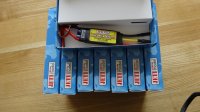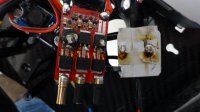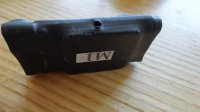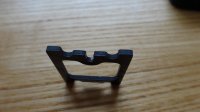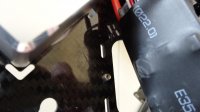I have now had enough of CarbonCore and their it is not our fault, you must be an idiot attitude.
After I removed the heatshrink from the blown ESC I noticed a hole in the side of it, this is where the ESC sits up against an ESC holder (sideways on)
I wanted to hear what CarbonCore said about this, as to me it looks like the bottom threads that go into the ESC holder actually went through the ESC.
This is the first time I have cut through the cable ties to have a look at all the ESCs, the one with the hole was the blown one, but another ESC holder simply came away,when I cut the cable tie, it was not bolted at all (picture 2+3)
Please remember this is an ARTF machine as I wanted to see exactly how it should be put together, all I am supposed to do is add the flight controller and fly away.
His usual, (It cant be us response posted below)
View attachment 16801View attachment 16802View attachment 16803
When sending pics, please use windows power toy or similar to resize them, I have very slow internet.
I do not understand how that problem was possible: The carbon piece that the ESC cable-ties to, does
not allow the bolt to go past the carbon.
The only thing I can imaging it that this part was not plugged-in to the slots in the lower frame plate,
and was pushed to to one-side, when bolting the upper plate, bringing the ESC into alignment with the now exposed bolt.
I build these with the carbon ESC plates pressed and glued and bolted with glue into the lower frame plates.
It is not possible for me to fit the ESC plates out of alignment: they are fitted to not fall-out otherwise fitting the top plate would not go smoothly.
I check very carefully that everything is correctly assembled to reduce the time I have to spend in customer support.
I can also see the from the cable-tie indents in the ESC heat shrink that the hole is not central to the cable tie spacing.
If the ESC was to fail from short-circuit, it would have done so when I tested them all, built-in the the Cortex, before posting.
If you are fitting ESCs not tested by myself, I can no longer provide customer support. I have promptly replied to at least 30 emails.
You have told me that you have had the Cortex to bits several times now.
Thank You,
